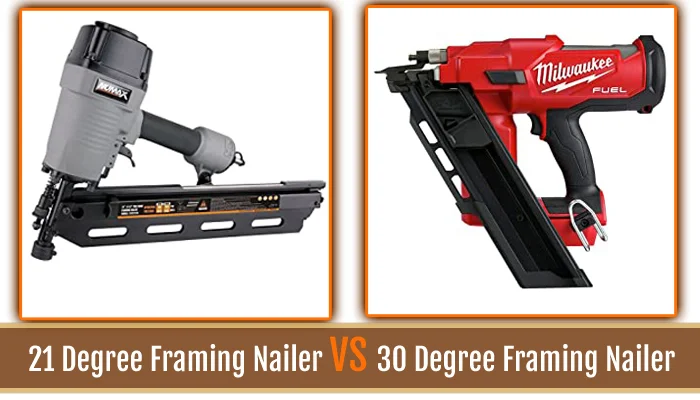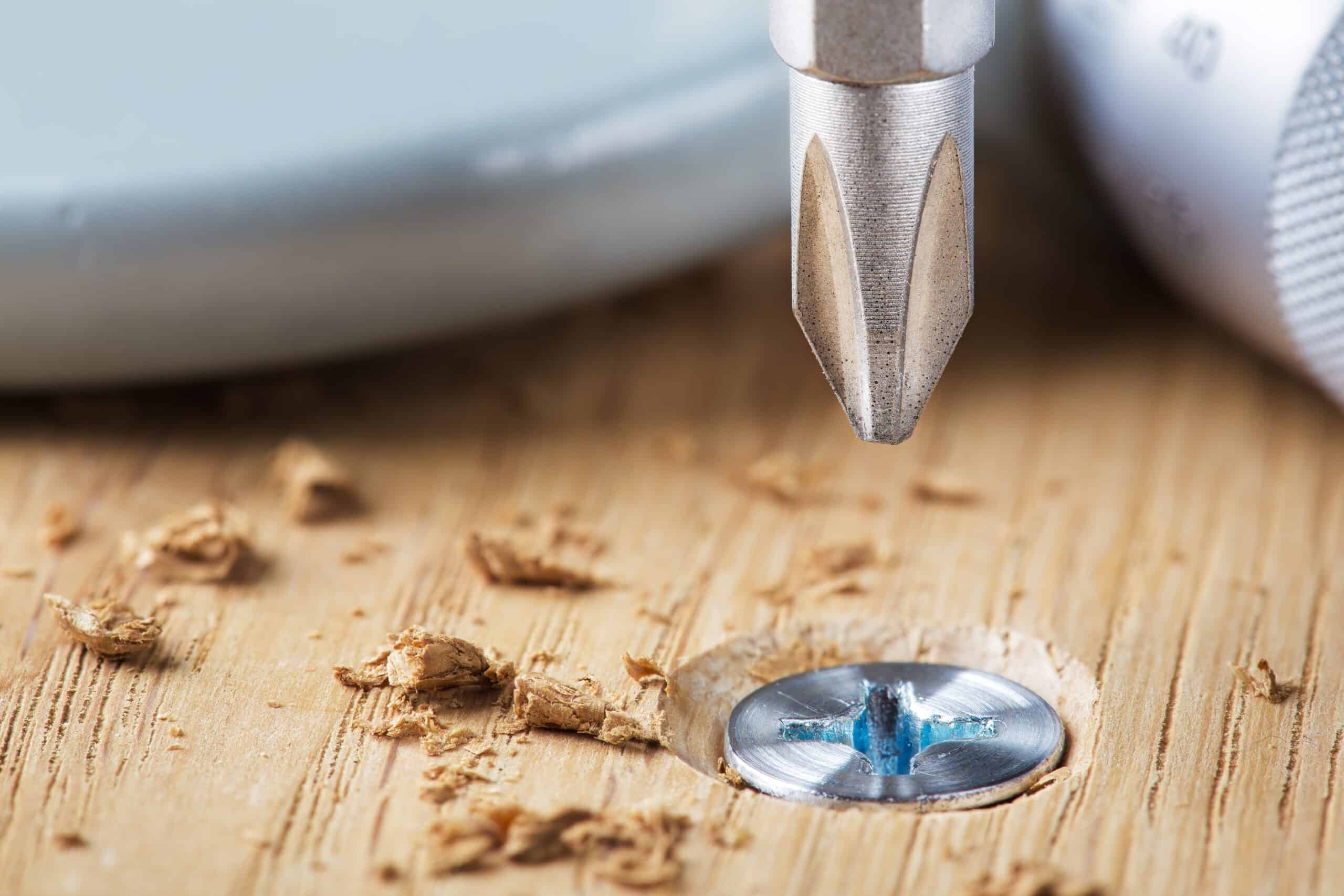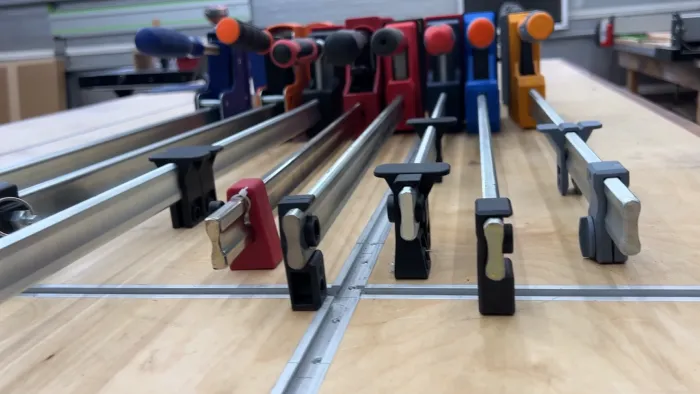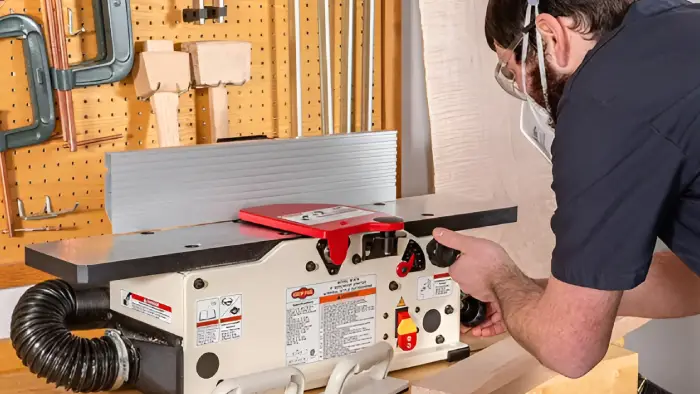WoodenuKnow.com is a participant in the Amazon Services LLC Associates Program, an affiliate advertising program designed to provide a means for sites to earn advertising fees by advertising and linking to Amazon.com and may earn from qualifying purchases.
A framing nailer is a must-have tool for any serious carpenter. It can be used to quickly and neatly attach boards or install trim in the case of some models. When it comes to choosing the right framing nailer, one common question is whether a 21-degree or 30-degree nailer is better. Depending on the angle of the best framing nailer, the nail will penetrate further into the wood. Lower-degree nails are less damaging to wood, while higher-degree nails hold better. Therefore, it’s important to weigh the pros and cons of both options before deciding which one is better suited for your specific needs.
This article will discuss which degree is most suitable for different types of employment and the benefits and drawbacks associated with the various degrees. We will also discuss when to use each type of nailer & how to use them appropriately for a particular task.
21 VS 30 Degree Framing Nailer : The Differences
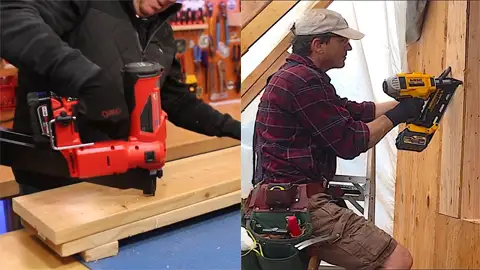
The nail guns can be classified as either 21 or 30-degree framing nailer models. They are the same size, but their angle of application is different. If you’re a professional who does lots of framing work, it’s worth investing in one of each because they have various applications.
Although they may look similar, there are some key differences between a 21 and 30-degree framing nailer. The followings are some key points:
The Angle of the Nail Magazine
The angle of the magazine is the main difference between these two types of nailers. A 21-degree framing nailer has a magazine angled at 21 degrees, while a 30-degree model has a magazine at 30 degrees.
This might not seem like a big deal, but it makes a big difference in the nails that are fired from the tool.
Working Degree Capability
Another big difference between the two types of nailers is the working degree capability. A 21-degree framing nailer can only fire nails at angles up to 22 degrees, while a 30-degree framing nailer model can fire nails at angles up to 34 degrees.
This means that a 30-degree framing nailer is much more versatile than a 21-degree model. You’ll be able to use it for a wider variety of applications.
Collation Type for Each Nailer
The collation type is how the nails are held together in the magazine. There are two main types of collation for framing nailers: Plastic and Paper strips.
21-degree nailers use plastic strip nail collation, which means that the nails are held together with small paper strips. This is the stronger of the two types of nail collation, and it can cause nail jam more easily.
30-degree framing nailers use paper strip nail collation, which is not as strong as the plastic strip. However, it’s less likely to cause blockages.
Nail Capacity
The nail capacity is another big difference between these two types of nailers. A 21-degree nailer can hold up to 60 – 70 nails, while a 30-degree model can hold up to 80 nails. This means that you’ll be able to work for more extended periods without stopping and reloading the 30° nailer.
Nail Head Type for Each Nailer
The nail-head type is the shape of the head of the nail. There are two main types of nail heads: Clipped or offset Head and Full Round Head nail. 21-degree framing nailers use, fully rounded head framing nails, while 30-degree models use clipped or offset head framing nails.
The type of nail head that you use will depend on the application. Full round head nails are better for tight spaces, while clipped head nails are better for general applications.
Nail Length for Each Nailer
The nail length is the measurement from the tip of the nail to the head. Both 21 and 30-degree framing nailers can use framing nails that are 2 inches to 3.5 inches long. However, the 30-degree framing nailer model is more versatile because it can also use framing nails 1.5 inches to 2.5 inches long.
Flexibility and Versatility
The 30-degree framing nailer is the clear winner for framing jobs regarding flexibility and versatility. Since it can use a wider range of nails, it’s more versatile and flexible. If you’re looking for a framer that can do it all, then the 30-degree model is the way to go.
Comparison Table for 21 & 30-Degree Framing Nailers

Here is a comparison table between 21 and 30-degree framing nailers:
| Perspectives | 21° Framing Nailer | 30° Framing Nailer |
| Working Capability | 20° to 22° | 30° to 34° |
| Collation Type | Plastic Collation | Paper Collation |
| Nail Capacity | 60 – 70 nails per magazine | Up to 80 nails per magazine |
| Nail Head Type | Full Round Head | Clipped Head or Offset Head |
| Nail Length | 2 to 3 ½ -inches | 2 to 3 ½ -inches |
| Applications | Framing, siding, decking, and sheathing | Decking, siding, hard lumber applications, woodworking, and framing |
When to Use a 21 Degree Framing Nailer
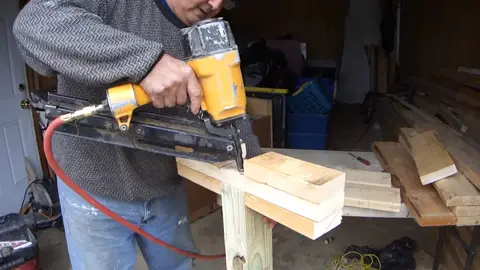
The 21-degree framing nailer is used for general applications such as-
- Framing: This framing nailer can be used for various framing applications such as building walls, attaching wood to concrete, creating roof trusses, etc.
- Decking: This nail gun can be used for attaching decking boards to the joists. Moreover, it can also be used for installing fencing.
- Sheathing: This tool can be used for installing plywood or OSB sheets on the walls or roof.
- Siding: A 21-degree framing nailer can also be used for attaching siding to the house. This nail gun is also used for installing siding.
- Sheathing: This tool can install plywood or OSB sheets on the walls or roof. It can be used for both new construction and remodeling framing projects.
When to Use a 30 Degree Framing Nailer

The 30-degree framing nailer angles are best suited for applications that require more precision, such as-
- Decking: Nail guns such as this can be used to attach deck boards to joists. They can also be used to install fencing.
- Siding: An angle framer can also be used to attach siding to the house. Additionally, this nail gun helps install soffits.
- Woodworking: This type of nailer can also be used for various woodworking applications such as creating custom cabinets, installing trim, etc.
- Hard lumber applications: The 30-degree nail gun is also appropriate for attaching hardwood lumber. In addition, it can be used for installing tile backer boards and other complex materials.
- Framing: These can be used for framing applications, including building walls, attaching wood to concrete, and making roof trusses.
Various Types of Framing Nail Guns
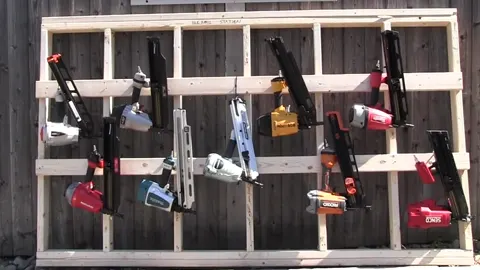
Besides these framing nailers, there are also a couple of other types of nailers you should become familiar with. The following will provide more details:
15-Degree Framing Nailer
A significant characteristic of framing nailers with 15-degree framing nailer angles is that they are wire coil models. Approximately 300 framing nails can be accommodated between the two thin wire strips that have been angled at a 15-degree framing nailer angle. All framing nails must be round in the head.
There is a high demand for 15-degree nailers due to the framing nails they use, which are frequently preferred by building codes. You can use them to frame around floor joists, tight corners, and wall studs in tight spaces.
28-Degree Framing Nailer
Wire nail strips are also used for collation in 28-degree nail guns, and framing nails can either have rounded or clipped head nails. The nailer is ideal for framing and sheathing of all types.
However, it is essential to keep in mind that 30-degree framing nails cannot be used inside a 28-degree nailer. Nails may jam, and the nailer may even be damaged.
Guidelines for Safe Use of Framing Nail Gun
Framing nail guns are powerful pneumatic or cordless tools, and as with any tool, there is a risk of injury if they are not used properly. The following guidelines help you use your nail gun safely:
- Wear safety glasses: Always wear safety glasses or goggles when using a nail gun.
- Wear ear protection: It is also recommended that you wear ear protection, such as earplugs or earmuffs, to protect your hearing.
- Wear a dust mask: If you are working in an area with dusty conditions, it is advisable to wear a dust mask to avoid inhaling harmful particles.
- Use the proper framing nails: Be sure to use the framing nails specified for your nail gun. Using the wrong framing nails can damage the gun and even cause it to malfunction.
- Maintain the nail gun: Keeping your nail gun clean and well-maintained is vital. This will help to ensure that it works properly and safely.
- Be familiar with the tool: Before using a nail gun, read the user manual so that you are familiar with its features and operation.
- Use the safety features: Most nail guns have a safety mechanism to help prevent accidental firing. Be sure to use these features as directed.
- Keep your fingers away from the trigger: Keep your fingers away from the trigger until you are ready to fire.
- Do not point the gun at anyone: Always keep the nail gun pointed in a safe direction, away from yourself and others.
- Be aware of your surroundings: Be sure to watch what is around you while you are using the nail gun. Avoid firing the gun near flammable materials or in areas where there might be people or animals nearby.
- Take your time: Do not rush when using a nail gun. If you feel rushed or pressured, it is best to take a break and come back to the task when you have more time.
- Use the suitable size hose: Be sure to use a hose that is the proper size for your nail gun. A too-small hose can cause the gun to malfunction.
- Keep the air pressure at the appropriate level: Check the air pressure regularly to make sure it is at the proper level. Too much or too little air pressure can cause the gun to malfunction.
- Unplug when not in use: Be sure to unplug the nail gun when not using it. This will help to prevent accidental firing.
If you follow these guidelines, you can help to avoid accidents and injuries when using a framing nail gun.
FAQs
Take a look at some of the frequently asked questions regarding 21° & 30° framing nailer:
01. Can You Use 30 Degree Nails in A 21 Degree Nailer?
No, you cannot use 30-degree nails in a 21-degree nailer. As 21° nailers used plastic collated nails, the 30° degree nails will not fit properly and may cause jamming or damage to the nailer.
02. Can You Use a 21 Degree Framing Nailer for Siding?
Yes, a 21-degree nailer can be used for siding. It is possible to use framing guns to install siding provided that the nails used are long enough to secure the siding firmly to the wood sheathing.
03. What is Better 21 Or 30 Degree Framing Nailer?
It depends on the application. But in general, a 30-degree framing nailer is better for most applications because it is more compact and can drive nails into tighter spaces.
04. What is the Most Common Degree Nail Gun?
The most common degree of nail gun is the 21 degrees, 28 degrees, and 3 degrees framing nailer. It is important to choose the right tool for the job, however, as using the wrong type of nail gun can result in jams, damage to the gun, or even accidents.
In Conclusion:
In conclusion, any contractor or home improvement enthusiast should have access to framing nailers. These tools can be handy for completing framing projects quickly and efficiently. Choosing the proper angle for the nail gun is crucial since the wrong angle can cause jams, gun damage, or even accidents. Therefore, if you’re wondering which is better, a 21 or 30 degree framing nailer, this comparison article should help you understand the difference between the two types of nail guns and help you choose the right one for your needs. Remember to always follow the safety guidelines when using a framing nailer to prevent accidents and injuries. By utilizing these guidelines and taking your time, you can ensure that your framing projects are safe and effective.

